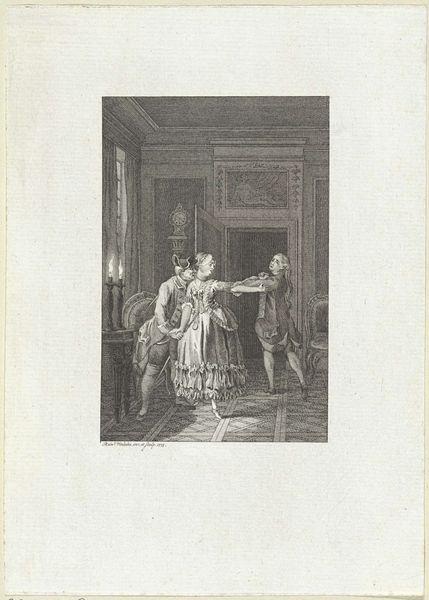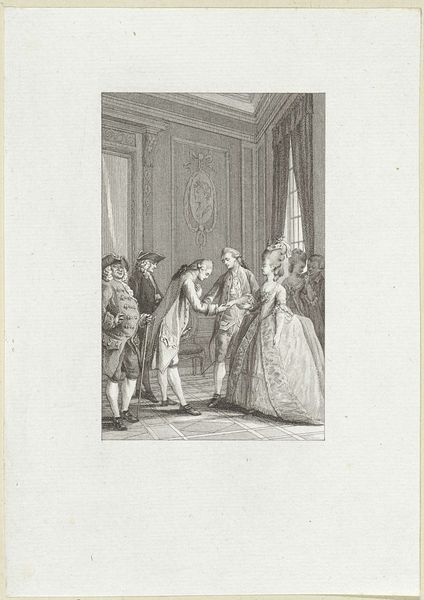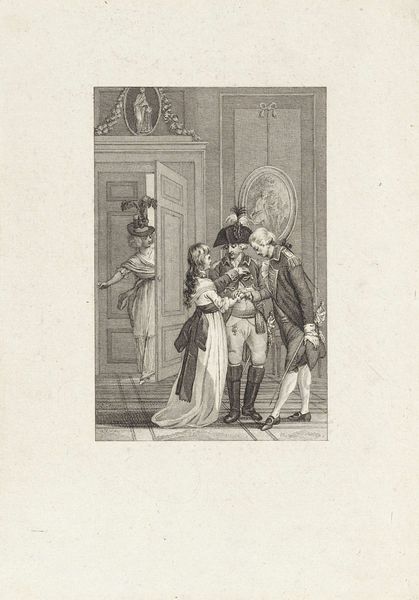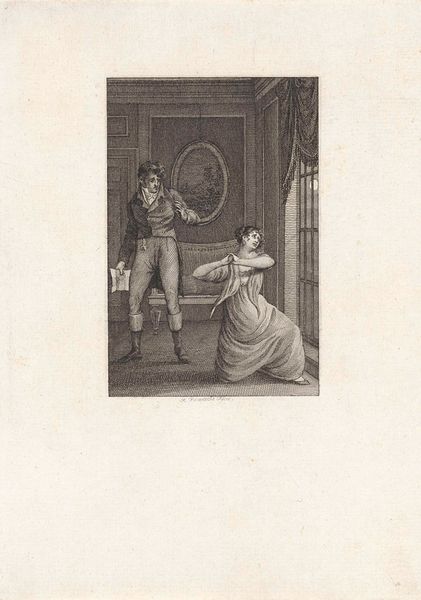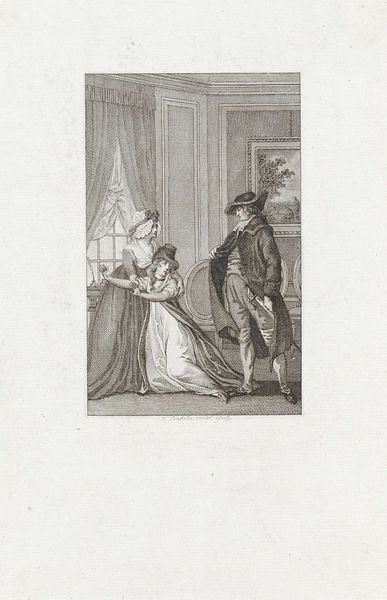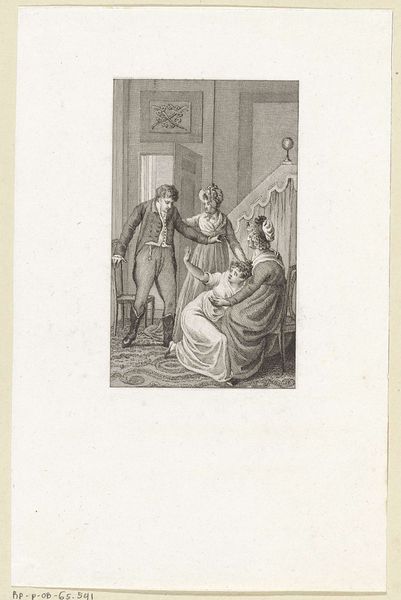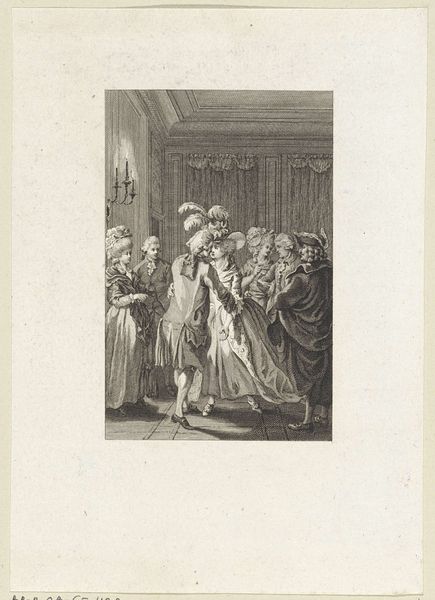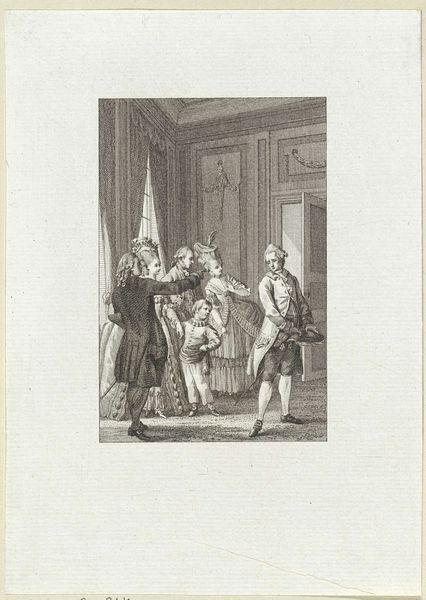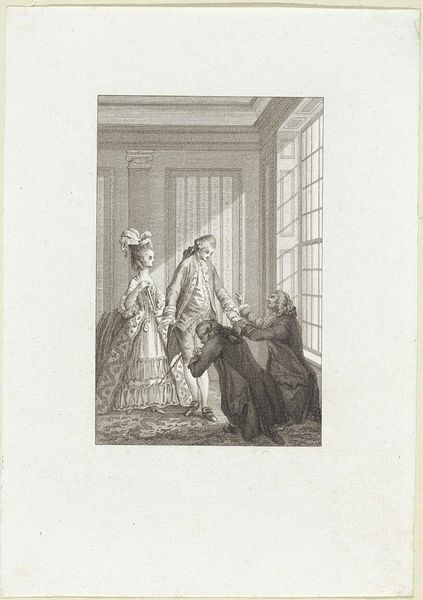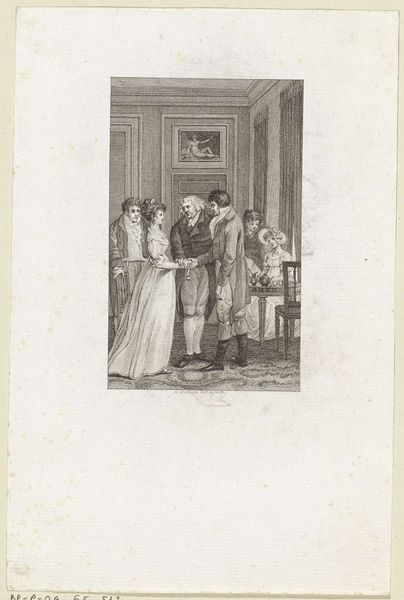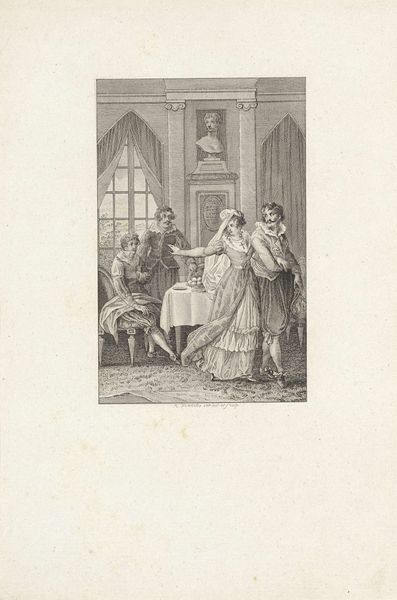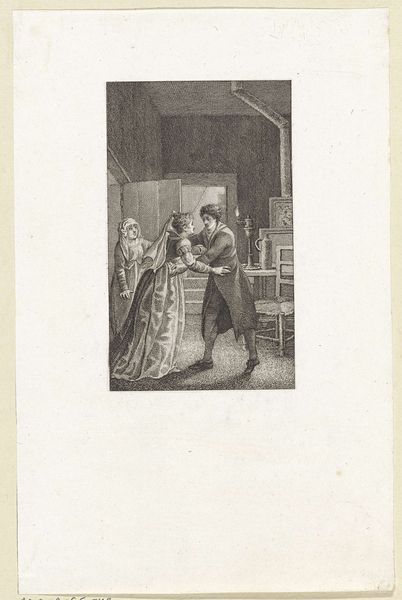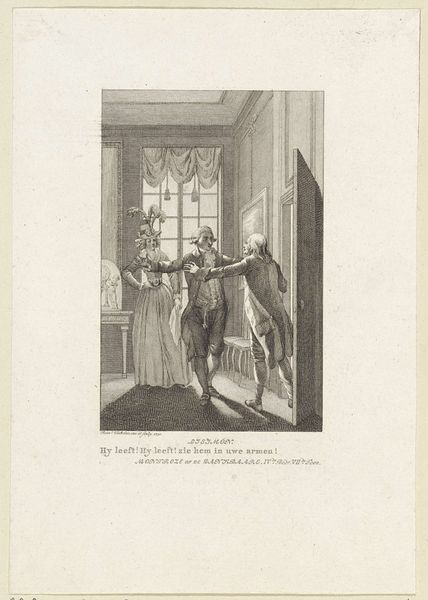
drawing, engraving
#
portrait
#
drawing
#
neoclacissism
#
narrative-art
#
old engraving style
#
history-painting
#
academic-art
#
engraving
Dimensions: height 210 mm, width 147 mm
Copyright: Rijks Museum: Open Domain
Editor: So, this engraving by Reinier Vinkeles, "Huilende vrouw wordt getroost door twee kinderen en een man" from 1793, depicts a woman being consoled. It’s quite moving, almost theatrical. What's your read on this piece, seeing it here at the Rijksmuseum? Curator: It's interesting to consider this engraving in the context of late 18th-century Neoclassicism. We see an emphasis on moralizing narrative. How do you think this image would be received by a contemporary audience, particularly given the social and political upheavals of the time, say, the French Revolution? Editor: I guess, offering comfort in a scene of despair would feel poignant given all the upheaval, perhaps providing a sense of stability during turmoil? Do you think the artist might be subtly commenting on political instability through this personal scene? Curator: It's a valid question. The domestic sphere, depicted here with Neoclassical restraint in the home interior, gains significance as a site of emotional and perhaps even political resilience. Consider the distribution of wealth and political power in the Dutch Republic at this time. How would such a display of familial care be viewed by different social classes? Editor: I see. It becomes a kind of commentary. To the wealthy, maybe a sign of responsible patronage and virtuous living, whereas for others, it would underscore what they're lacking. I never thought about art quite like this. Curator: Exactly. By focusing on the reception and its role in wider discourse, we begin to unravel how an image, even a seemingly simple domestic scene, participates in a complex network of social meanings and political undertones. The medium—engraving—makes it accessible, a tool for dissemination of these ideas. Editor: Thank you. Now I can understand a whole other level of meaning to the image. It is much more powerful and involved than what is immediately perceived. Curator: Precisely, and by delving into history, we realize how the art pieces gain additional value and importance within a broader context.
Comments
No comments
Be the first to comment and join the conversation on the ultimate creative platform.
